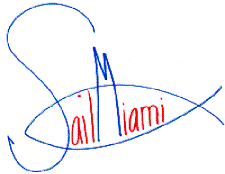NOAA-Supported Scientists Predict "Larger Than Average" Gulf Dead Zone
It is unclear what impact, if any, the BP Deepwater Horizon oil spill will have on the size of
the dead zone.
Posted Monday, June 28, 2010
The northern Gulf of Mexico hypoxic zone, an underwater area with little or no oxygen known commonly as the "dead zone," could be larger than the recent average, according to a forecast by a team of NOAA-supported scientists from
the Louisiana Universities Marine Consortium, Louisiana State University, and the University of Michigan.
Scientists are predicting the area could measure between 6,500 and 7,800 square miles, or an area roughly the size of the state of New Jersey. The average of the past five years is approximately 6,000 square
miles. It is the goal of a federal state task force to reduce it to 1,900 square miles. The largest dead zone on record, 8,484 square miles, occurred in 2002.
This forecast is based on Mississippi River nutrient flows compiled annually by the U.S. Geological Survey. Dead zones off the coast of Louisiana and Texas are caused by nutrient runoff, principally from agricultural activity,
which stimulates an overgrowth of algae that sinks, decomposes, and consumes most of the life-giving oxygen supply in the water. It is unclear what impact, if any, the BP Deepwater Horizon oil spill will have on the size of
the dead zone.
"The oil spill could enhance the size of the hypoxic zone through the microbial breakdown of oil, which consumes oxygen, but the oil could also limit the growth of the hypoxia-fueling algae," said R. Eugene Turner,
Ph.D., professor of oceanography at Louisiana State University. "It is clear, however, that the combination of the hypoxic zone and the oil spill is not good for local fisheries."
Hypoxia is of particular concern because it threatens valuable commercial and recreational Gulf fisheries. In 2008, the dockside value of commercial fisheries was $659 million. The 24 million fishing trips taken in 2008 by
more than three million recreational fishers further contributed well over a billion dollars to the Gulf economy.
"As with weather forecasts, this prediction uses multiple models to predict the range of the expected size of the dead zone," said Robert Magnien, Ph.D., director of NOAA's Center for Sponsored Coastal Ocean Research. "The
strong track record of these models reinforces our confidence in the link between excess nutrients from the Mississippi River and the dead zone."
"The 2010 spring nutrient load transported to the northern Gulf of Mexico is about 11 percent less than the average over the last 30 years," said Matthew Larsen, Ph.D., USGS associate director for water. "An estimated 118,000
metric tons of nitrogen in the form of nitrate were transported in May 2010 to the northern Gulf."
The collaboration among NOAA, USGS, and University scientists facilitates understanding of the linkages between activities in the Mississippi River watershed and the downstream effects on the northern Gulf of Mexico.
Long-term data sets on nutrient loads and the extent of the hypoxic zone have improved forecast models used by management agencies to understand the nutrient reductions required to reduce the size of the hypoxic zone to the
established goal. This year's forecast is an example of NOAA's growing ecological forecasting capabilities that allow for the protection of valuable resources using scientific, ecosystem-based approaches.
An announcement of the size of the 2010 hypoxic zone, which is an annual requirement of the Gulf of Mexico Hypoxia Task Force Action Plan, will follow a NOAA-supported monitoring survey led by the Louisiana Universities
Marine Consortium between July 24 and August 2. Information on the extent of hypoxia will also be available on the NOAA's Gulf of Mexico Hypoxia Watch Web page, which displays near real-time results of the NOAA Fisheries
Service summer fish survey in the northern Gulf of Mexico currently underway and scheduled to be completed by July 18.
The 2014 recreational sport season is July 30 & 31
Find out where the fish are running with our weekly fishing reports from the Florida Keys.
It's Catch and Release Time for lots of Snook in South Florida
Safety tips to remember before and during a dive
Suspects potentially face 468 misdemeanor counts of illegal possession, among other charges.
Contact ~ About ~ Advertise ~ Privacy Policy ~ FAQ
Toll free 1-877-228-1569 ~ In South Florida 786-525-3545
Copyright© 1999 - 2015 Atlantic Coast Boating

